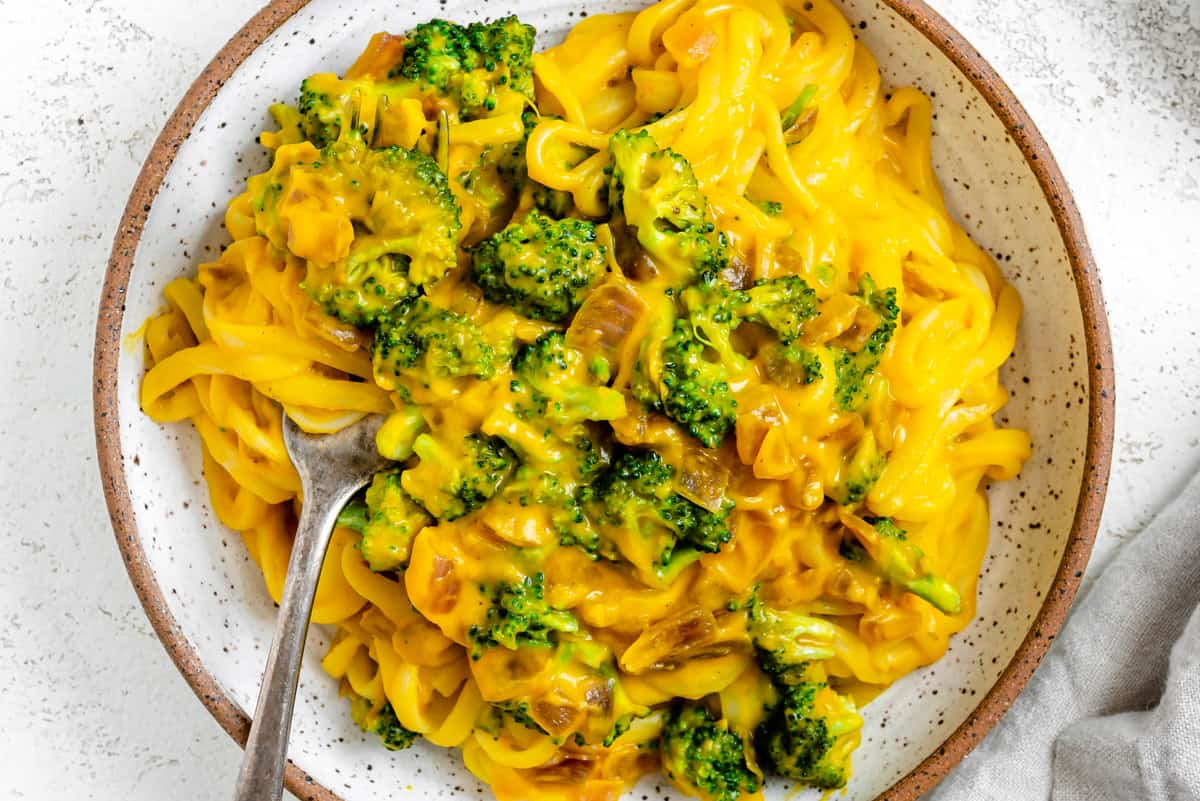As an Amazon Associate, I earn from qualifying purchases.
Transform your fresh butternut squash into this creamy Butternut Squash Pasta Sauce. It’s filled with healthy plant-based ingredients and topped with roasted veggies. It’s the perfect fall meal!
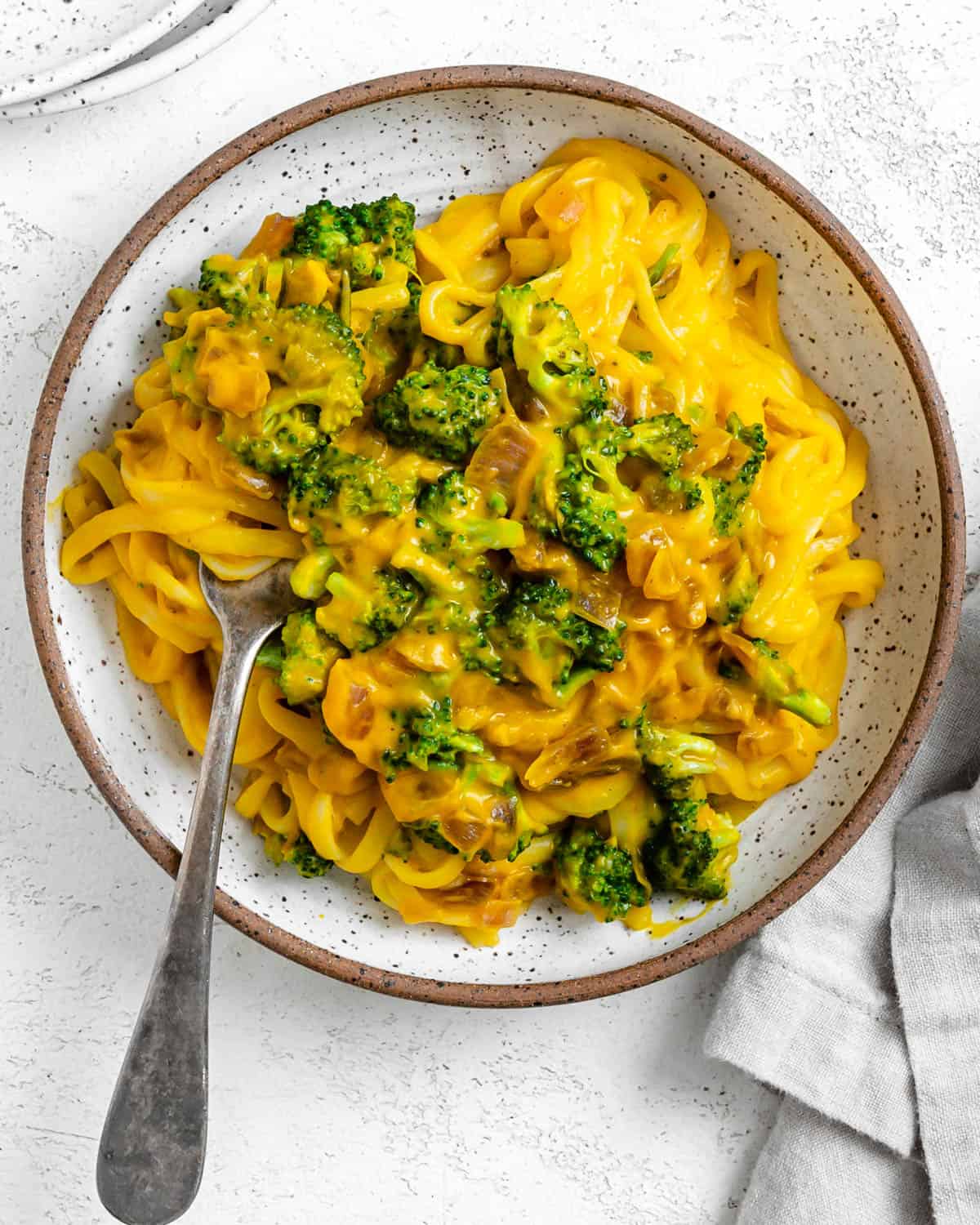
This creamy butternut squash sauce is similar to our homemade sweet potato pasta sauce. It’s rich, creamy, and one of the best ways to incorporate veggies into a picky eater’s diet. Once the whole family is hooked on winter squash, you have to try these Kabocha Squash Enchiladas and Roasted Spaghetti Squash. Get ready for a flavorful pumpkin season!
Why You’ll Love This Pasta Sauce
- Perfect fall meal. As soon as the cool weather arrives, replace the typical marinara sauce or non-dairy alfredo sauce with this butternut squash pasta dish.
- Great way to use up butternut squash. When you have half of a butternut squash left over, making a delicious pasta sauce is the perfect solution.
- Gluten free. Made with tamari, this pasta sauce is naturally gluten-free. Serve with rice noodles or your choice of gluten-free pasta like brown rice noodles, spaghetti squash, or zucchini noodles.
- Ready in 30 minutes! By steaming the diced butternut instead of toasting a larger butternut, the prep time is significantly reduced.
- Freezer safe. This pasta sauce freezes easily. If you plan to use a lot of butternut squash, make a large batch and freeze the sauce for year-round enjoyment.
The ingredients
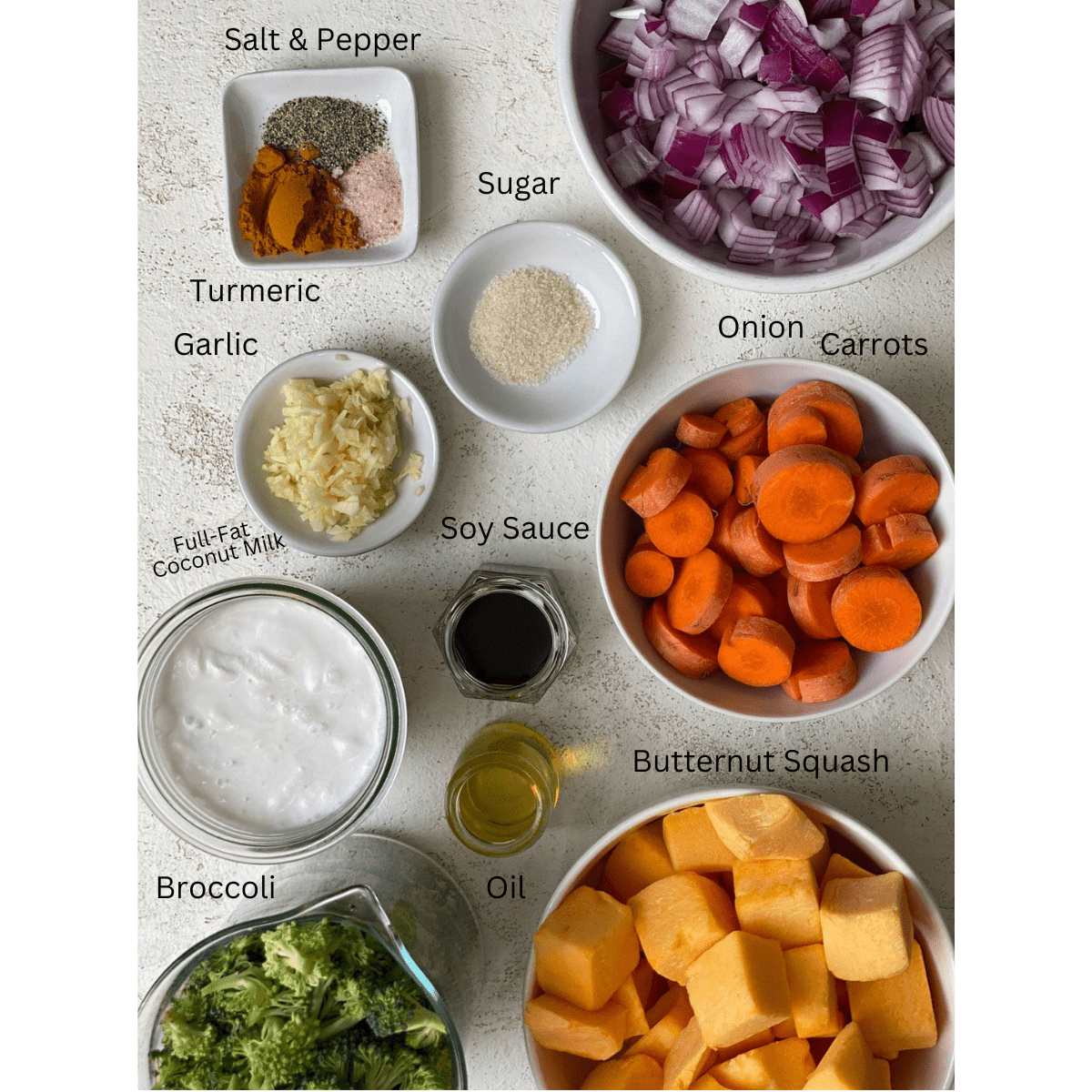
- Butternut Squash: Use freshly cut, pre-cut, or frozen butternut squash. If using pre-cut pieces, be sure to cut the pieces into roughly ½ inch cubes.
- carrots: We used 2 medium fresh carrots, but frozen carrots will do as well.
- coconut milk: Provides creaminess without dairy or cream. For the best flavor, use canned full-fat coconut milk.
- Turmeric: Enhances the color of pasta sauce while adding an earthy note and many health benefits.
- Oil: Use a neutral oil. If it’s oil-free, leave it out and use broth or water.
- Red onion: Adds a milder flavor than yellow onions, however yellow or white onions can also be used.
- Garlic: Use 1 clove of garlic or ⅛ teaspoon of garlic powder.
- Soy sauce: Adds saltiness and umami flavor to the creamy pasta sauce. If gluten free, use tamari.
- granulated sugar: Cane sugar, coconut sugar, or light brown sugar work best.
- Broccoli: Either fresh or frozen labor. Frozen is usually cheaper and shortens the preparation time.
Possible substitutions
- Butternut Squash: Replace it with another winter squash like diced pumpkin, acorn squash, or sweet potato. Acorn squash makes a very different sauce, but it’s still delicious. You can also use a mix of several pumpkin varieties.
- Vegetables: Substitute another vegetable for the broccoli, such as quartered Brussels sprouts, green beans, frozen peas, or frozen mixed vegetables.
- Add heat: If you want your vegan butternut squash pasta sauce to have a kick, add red pepper flakes or sriracha to the sauce, depending on your taste.
How to Make Butternut Squash Pasta Sauce
- 1) Preheat the oven to 350 degrees F.
- 2) Next, steam the butternut squash and carrots until the veggies are easily pierced with a fork.
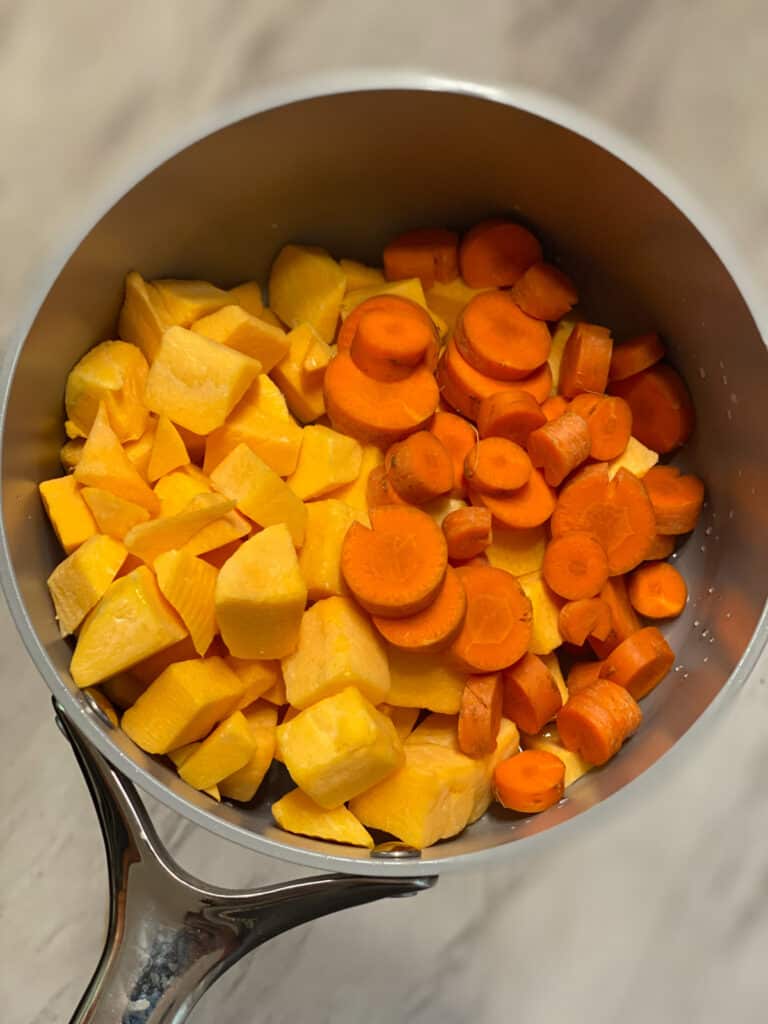
Alternatively, you can use our super easy How to Roast a Butternut Squash guide to cook the butternut squash on a baking sheet lined with parchment paper. If you wish, you can also roast the carrots in the oven at the same time. Use our How to Make Glazed Carrots post for a guide on cooking times.
- 3) Once the veggies are cooked and tender, place them in a blender along with the coconut milk, turmeric, salt, and black pepper. Blend on high until you get a smooth sauce. Put aside.

- 4) In a large skillet over medium-high heat, heat a neutral cooking oil until hot. Add the onion and garlic and sauté until the onions are tender and translucent, about 5 minutes.
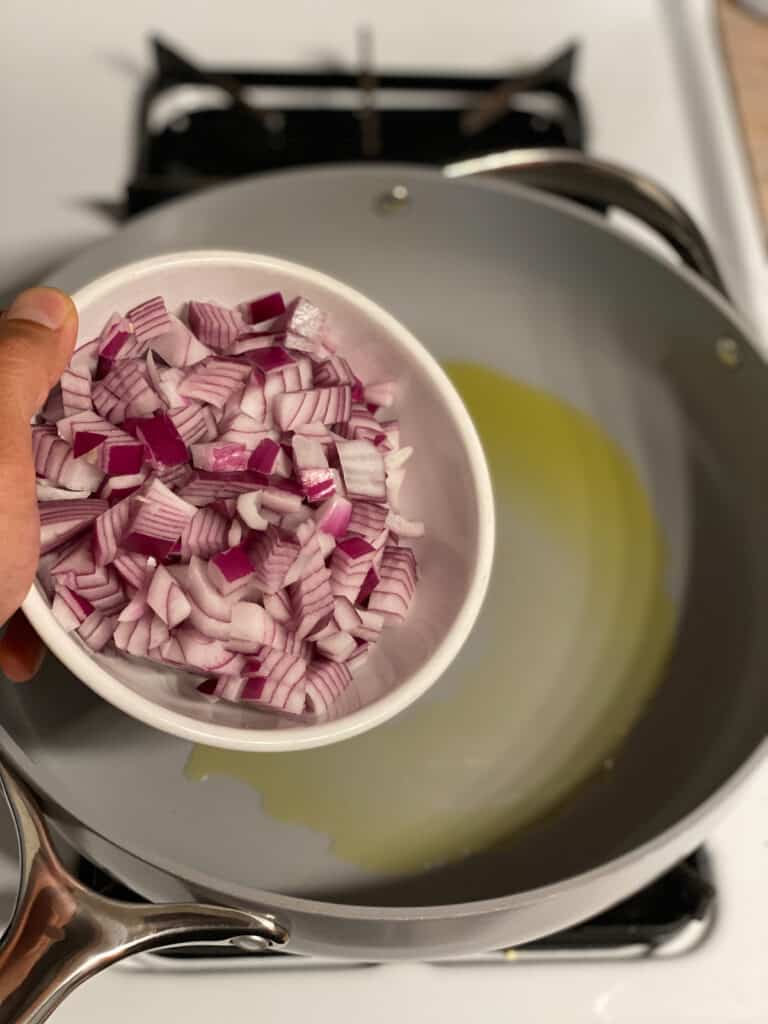
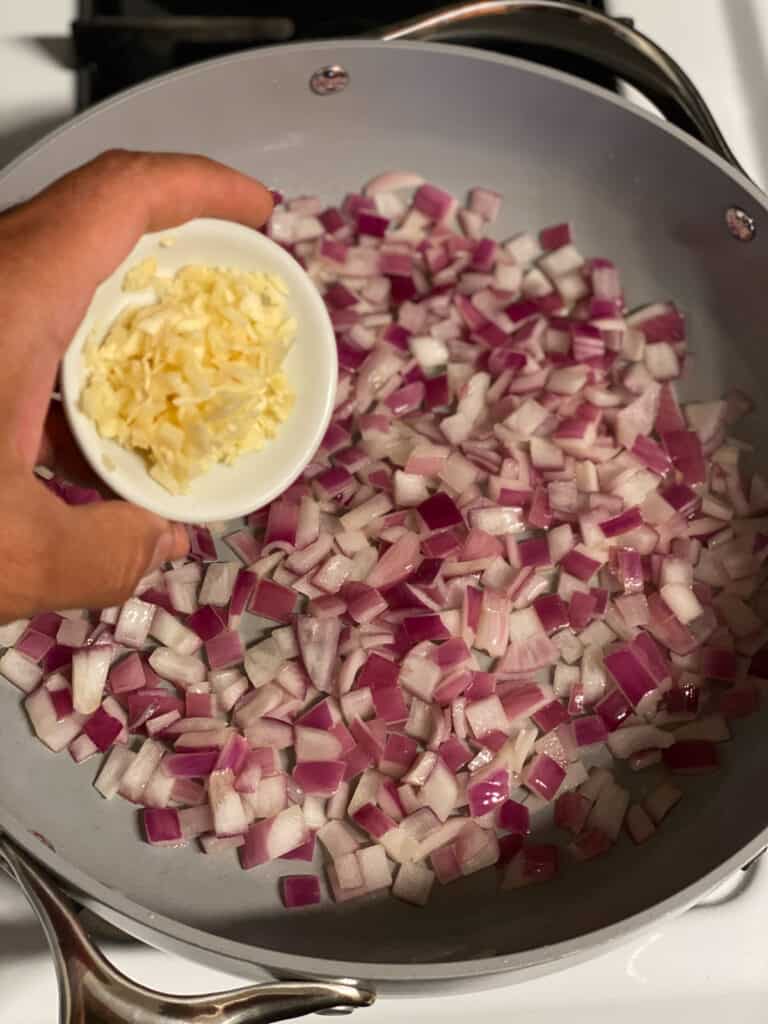
- 5) Add frozen broccoli or vegetable of your choice and cook for 2-3 minutes.
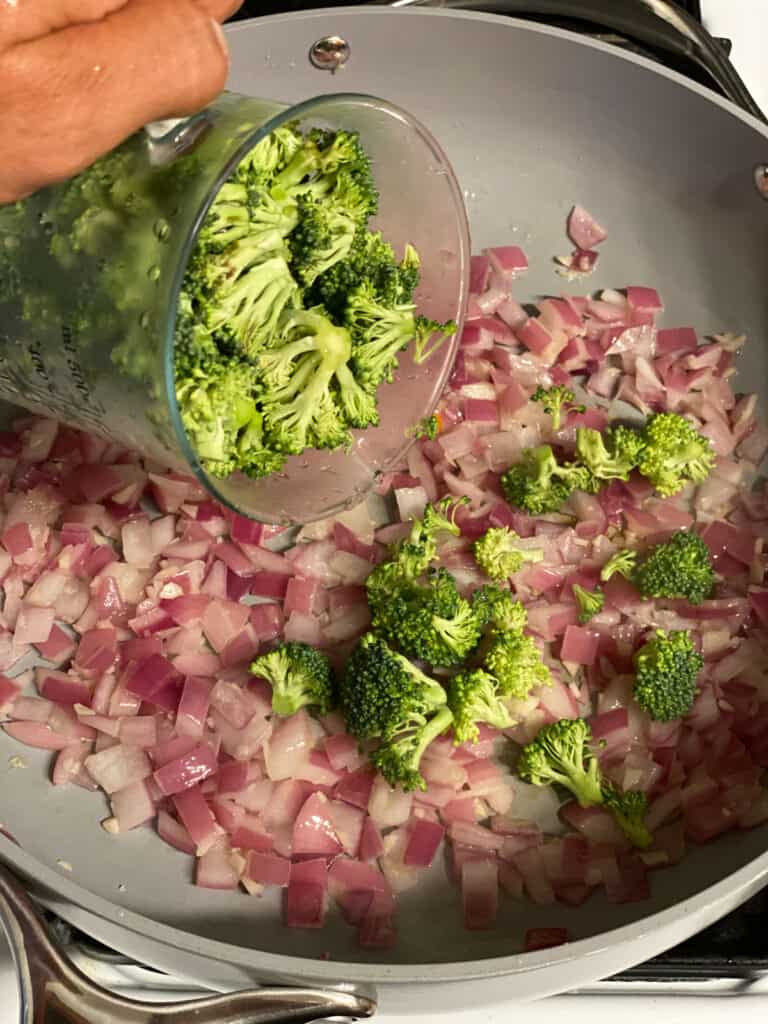
- 6) Add the soy sauce and sugar and continue cooking about 7 minutes, or until the vegetables are cooked to your preference.
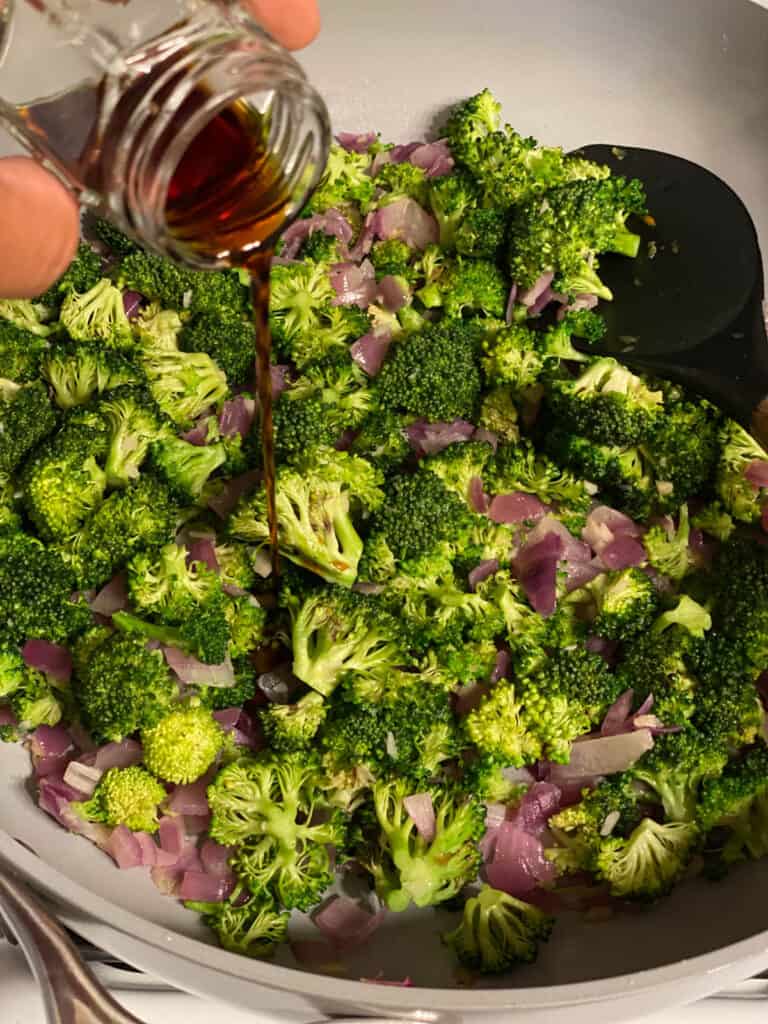
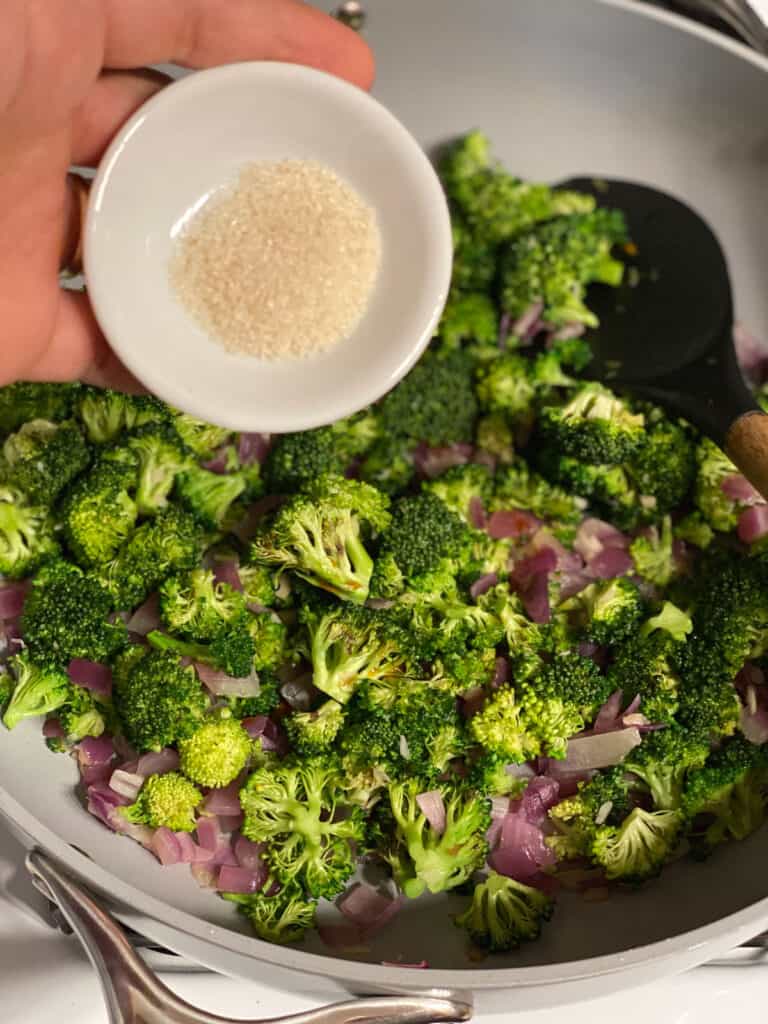
- 7) Finally, stir in the cooked pasta and creamy sauce until well combined. Serve hot and creamy!
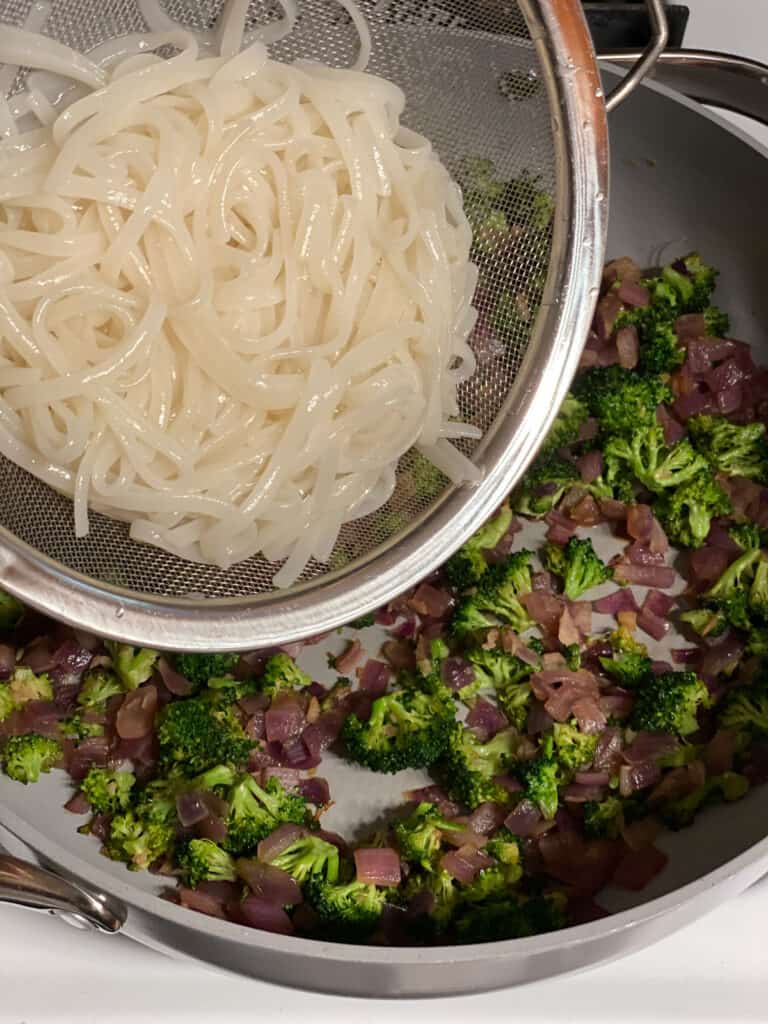
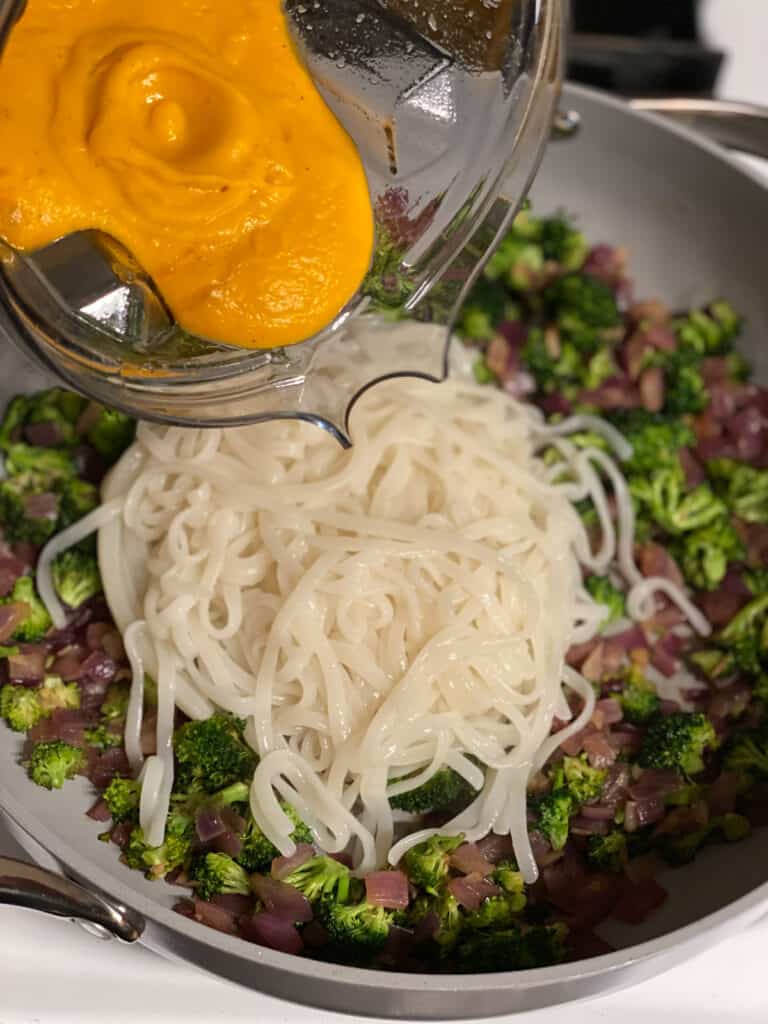
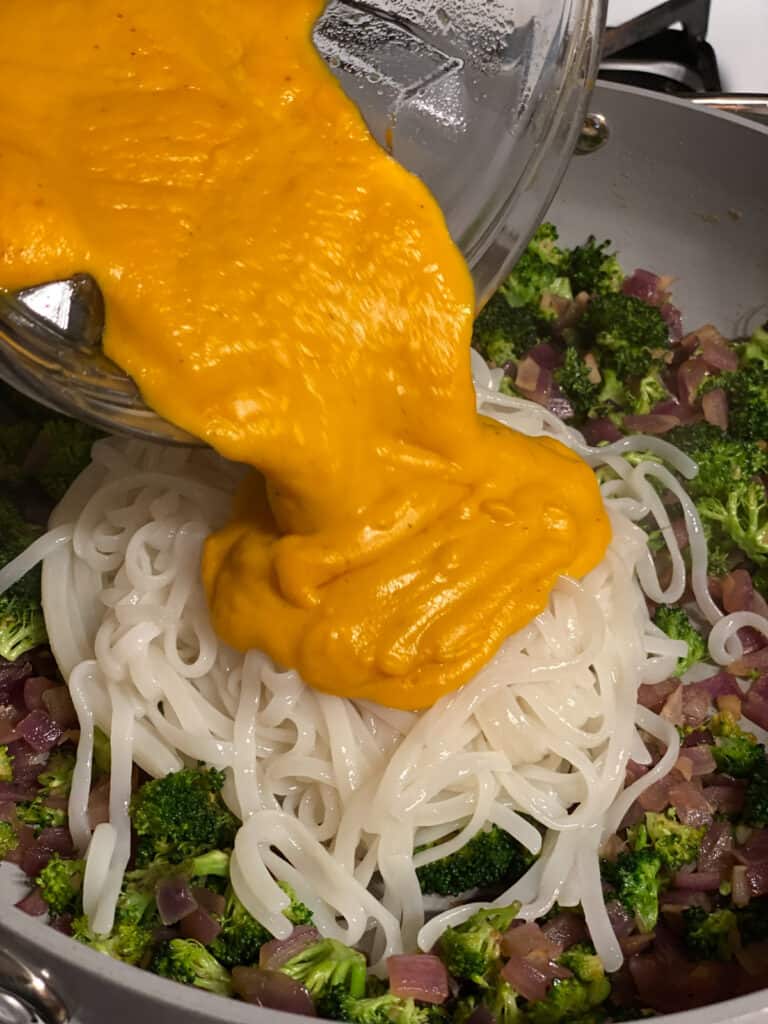
Recipe FAQs
Prepare a steamer basket or saucepan. Fill the pot with fresh water, then place the steamer basket on top, making sure the water does not touch the upper basket. Cover the pot, turn the heat to medium-high and bring the water in the pot to a low boil. Once simmering, add the diced butternut squash and chopped carrots to the steamer basket, cover again and steam for about 15 minutes, or until the vegetables are tender.
Absolutely. This is a great way to cut down on prep time, as peeling and preparing a whole butternut squash can be difficult and time-consuming.
You can use any type of pasta. Because they’re cooked separately and combined at the end, cook your favorite pasta shape according to the individual package directions.
Top recipe tips
- Adjust the consistency. Depending on your preference, you may prefer a thinner sauce. If so, add vegetable broth 2 tablespoons at a time until desired consistency is reached.
- Reserve 1 cup of pasta cooking water. Adding the reserved pasta water when mixing the pasta and pasta sauce will help the pasta sauce stick to the pasta.
- Use ripe butternut squash. Ripe butternut squash is sweeter and more flavorful than unripe butternut squash. When browsing the produce section, choose a butternut squash that is beige in color and free of green spots. It should also feel heavy for its size.

serving suggestions
Here are some of our favorite sides to serve with this healthy butternut squash pasta:
Make tips and storage instructions in advance
When making this butternut squash pasta sauce for meal prep, keep the sauce separate from the vegetables and pasta. Pasta and sauce can be kept mixed, however the pasta or noodles will absorb the sauce in the fridge overnight and won’t be as creamy the next day.
Leftover butternut squash pasta sauce will keep in an airtight container in the refrigerator for up to 5 days or in the freezer for up to 3 months. This sauce freezes well in freezer bags or freezer-safe containers like mason jars.
If you keep the pasta and pasta sauce together, you can enjoy them within 3 days. Reheat in the microwave or in a saucepan until warmed through again.
More butternut squash recipes
Photos by Alfonso Revilla
Boil water and cook rice noodles according to package instructions.
Steam the butternut squash and carrots until tender, about 10 minutes.
Place tender butternut squash, carrots, coconut milk, turmeric, salt and pepper in a blender and blend until smooth and creamy.
In a large skillet over medium-high heat, heat oil and sauté onions and garlic until onions are tender and translucent. Add frozen broccoli and cook for 2 to 3 minutes.
Add soy sauce and sugar and cook for about 7 minutes.
Add cooked pasta and creamy butternut squash to skillet and mix well.
- Adjust the consistency. Depending on your preference, you may prefer a thinner sauce. If so, add vegetable broth 2 tablespoons at a time until desired consistency is reached.
- Reserve 1 cup of pasta cooking water. Adding the reserved pasta water when mixing the pasta and pasta sauce will help the pasta sauce stick to the pasta.
- Use ripe butternut squash. Ripe butternut squash is sweeter and more flavorful than unripe butternut squash. When browsing the produce section, choose a butternut squash that is beige in color and has no green spots. It should also feel heavy for its size.
Calories: 582kcalCarbohydrates: 93GProtein: 8thGFat: 22GSaturated Fatty Acids: 15GPolyunsaturated fat: 1GMonounsaturated fatty acids: 4GSodium: 701mgPotassium: 1029mgFiber: 7GSugar: 9GVitamin A: 20460IUVitamin C: 87mgCalcium: 141mgIron: 5mg
Disclaimer: While plantbasedonabudget.com tries to provide accurate nutritional information, please note that these are estimates only. Nutritional information may be affected by product type, brand purchased and in other unpredictable ways. Plantbasedonabudget.com accepts no liability for any loss or damage arising from your reliance on nutritional information. If you have a specific calorie intake requirement, please consult your doctor first.
Source link

